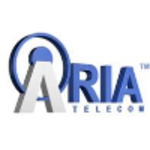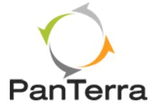Description

Dialfire

PARTH
Comprehensive Overview: Dialfire vs PARTH
Dialfire is a cloud-based call center solution designed to cater to various needs of call centers, telemarketing teams, and customer support departments. Here's a detailed overview:
a) Primary Functions and Target Markets
Primary Functions:
- Outbound Calling: Dialfire supports extensive outbound calling functionalities, including predictive dialing, progressive dialing, and manual dialing modes.
- Campaign Management: Users can easily set up, run, and monitor calling campaigns, with options for customizing scripts and recording calls.
- Contact Management: Features for managing and maintaining contacts, tracking call interactions, and updating contact details efficiently.
- Real-Time Analytics: Provides detailed analytics and reporting for monitoring agent performance, campaign success, call status, etc.
- Integration Capabilities: Supports integration with CRM systems and other third-party applications, allowing for a seamless flow of data.
- Interactive Voice Response (IVR): Automated handling and routing of calls to streamline customer interactions.
- Security and Compliance: Ensures data protection and offers compliance with various industry standards.
Target Markets:
- Telemarketing Firms: Organizations focused on sales and lead generation find Dialfire's comprehensive set of call handling and reporting tools beneficial.
- Customer Support Centers: Companies providing customer support can use Dialfire for both inbound and outbound call management to enhance customer service.
- Market Researchers: The platform aids in conducting surveys and collecting data through phone interactions efficiently.
- SMBs to Large Enterprises: With its scalable infrastructure, Dialfire caters to both small to medium-sized businesses (SMBs) and larger enterprises.
b) Market Share and User Base
Dialfire is one of several tools in the competitive landscape of call center solutions. Although specific market share figures for Dialfire may not be publicly available, the tool is recognized among businesses looking for a flexible and cost-effective cloud-based solution.
In general, the call center software market is dominated by several large players with significant market shares – like Five9, Genesys, and NICE inContact. Dialfire, which is often chosen for its affordability and simplicity, appeals primarily to smaller companies or specific departments within larger organizations.
The user base is typically composed of:
- Small to medium-sized telemarketing teams looking for easy setup and minimal upfront costs.
- Enterprises requiring a customizable and scalable solution without investing in extensive infrastructure.
c) Key Differentiating Factors
- Cost-Effectiveness: Dialfire is often praised for its pricing model, which can be more economical compared to larger competitors, making it attractive for budget-conscious companies.
- Ease of Use: The platform is designed with user-friendliness in mind, allowing teams to set up and operate campaigns without extensive technical expertise.
- Customization and Flexibility: Users appreciate the ability to customize scripts, call workflows, and integrate seamlessly with existing systems.
- Scalability: It offers a scalable solution that can grow with a company's needs, catering to both standalone teams and integrated enterprise call centers.
- No Long-Term Contracts: Dialfire offers the flexibility of pay-as-you-go pricing without binding users into long-term contracts, unlike some competitors.
- Fast Deployment: As a cloud-based service, Dialfire provides rapid deployment, allowing organizations to get operational quickly without the need for complex installations.
Overall, Dialfire's blend of affordability, functionality, and ease of use positions it as a viable option in the call center software market, especially for those needing a quick-to-deploy solution with robust outbound calling features.
Contact Info

Year founded :
Not Available
Not Available
Not Available
Not Available
Not Available

Year founded :
2017
Not Available
Not Available
India
Not Available
Feature Similarity Breakdown: Dialfire, PARTH
When comparing Dialfire and PARTH from a perspective of feature sets, interfaces, and unique offerings, it's important to note that both platforms are designed to facilitate various aspects of customer communication and contact management. Here's a breakdown:
a) Core Features in Common
Both Dialfire and PARTH offer a variety of core features that are crucial for organizations in need of contact management and communication solutions:
-
Cloud-based Calling:
- Both platforms provide cloud-based calling services, allowing users to make and receive calls over the internet without extensive hardware needs.
-
Campaign Management:
- They offer tools for creating, managing, and analyzing campaigns, which is vital for businesses looking to optimize their outreach efforts.
-
Analytics and Reporting:
- Both services provide analytics and reporting capabilities that help users track the performance of their campaigns and adjust strategies accordingly.
-
CRM Integration:
- Each platform supports integration with CRM systems, enabling seamless data flow and better customer relationship management.
-
Automated Dialing:
- Automated dialing features such as predictive or power dialing are available, enhancing the efficiency of connecting with customers.
b) User Interface Comparison
-
Dialfire:
- Dialfire is known for its user-friendly interface, which is designed to be intuitive and easy to navigate even for users who may not have much experience with contact center software. Its dashboard is clean, providing easy access to all major functionalities with minimal clicks. The platform often receives praise for its quick setup and straightforward operations.
-
PARTH:
- PARTH’s interface tends to focus on offering a customizable experience. It allows users to adapt the look and feel to better match their specific workflow requirements. While it may be slightly more complex due to its flexibility and customization options, advanced users appreciate the control this provides over the user experience.
c) Unique Features
-
Dialfire:
- Real-time Collaboration:
- Dialfire offers tools that enable real-time collaboration within teams, which is especially useful in fast-paced environments.
- Intelligent Call Blending:
- It includes unique call blending capabilities that ensure seamless transitions between inbound and outbound communication based on call workloads.
- Real-time Collaboration:
-
PARTH:
- Machine Learning Insights:
- PARTH distinguishes itself by integrating advanced machine learning insights that help predict customer behaviors and optimize contact strategies.
- Custom Scripting and Integration:
- Offers more advanced scripting capabilities, allowing users to create highly tailored scripts for agents, along with robust API support for wider integration across different systems and platforms.
- Machine Learning Insights:
In summary, while Dialfire and PARTH share several core capabilities necessary for effective contact management, their differentiation lies in user interface design philosophy and advanced unique features—Dialfire with its focus on simplicity and real-time collaboration, and PARTH with its advanced customization and machine learning enhancements. Each platform’s strengths might make it more suitable for particular business needs depending on user requirements and technical expertise levels.
Features

Not Available

Security
Customizations
Collaboration Tools
User Management
Data Analytics
Best Fit Use Cases: Dialfire, PARTH
Dialfire and PARTH are both tools that serve distinct purposes and are suited for different types of businesses and projects. Here’s an overview of the best fit use cases for each:
Dialfire
a) For what types of businesses or projects is Dialfire the best choice?
Use Cases:
-
Outbound Call Centers: Dialfire is ideal for outbound call centers that need to handle large volumes of calls efficiently. It’s particularly beneficial for sales campaigns, customer surveys, and telemarketing projects.
-
Small to Medium Enterprises (SMEs): SMEs with limited budgets but needing a robust and scalable telemarketing solution can leverage Dialfire’s cloud-based service without significant upfront investment.
-
Remote Sales Teams: Companies with remote or distributed sales teams benefit from Dialfire's flexibility and accessibility, allowing team members to work from any location.
-
Lead Generation and Follow-up: Businesses focused on generating and following up on leads can use Dialfire to automate dialing processes, manage contacts, and integrate their CRM systems.
Industry Fit:
- Telemarketing
- Real estate
- Financial services
- Non-profit organizations for fundraising
Company Size:
- Small to medium businesses and startup companies
PARTH
b) In what scenarios would PARTH be the preferred option?
Use Cases:
-
Project Management: PARTH is tailored for businesses that require a robust project management solution to manage intricate tasks and collaborate efficiently across teams.
-
Comprehensive Data Analysis: For organizations that need detailed data analysis and reporting capabilities, PARTH provides tools that are useful in evaluating performance and making data-driven decisions.
-
Complex IT Projects: It supports complex IT projects that require intricate tracking, resource management, and timeline adherence.
-
Industries Needing Compliance and Documentation: Industries that must track compliance and maintain detailed documentation benefit from PARTH’s ability to organize and manage extensive project documents and records.
Industry Fit:
- IT and Software Development
- Construction
- Healthcare
- Legal firms needing project and case management
Company Size:
- Medium to large enterprises that have complex project management needs.
How do these products cater to different industry verticals or company sizes?
Industry Verticals:
-
Dialfire is geared towards industries reliant on direct customer communication such as telemarketing, insurance, and real estate, where automated dialing and customer interaction tracking are critical.
-
PARTH fits industries that prioritize structured projects with multiple stakeholders, such as IT, healthcare, and construction. Its capacity for handling detailed planning and documentation makes it adaptable to sectors needing stringent oversight.
Company Sizes:
-
Dialfire's cloud-based nature makes it accessible to small businesses without heavy infrastructure investments, while its scalability can support larger call center operations.
-
PARTH is more suited for medium to large enterprises due to its comprehensive project management capabilities, which are best utilized in environments with complex, multifaceted projects requiring coordination across multiple departments.
By addressing these distinct needs, Dialfire and PARTH serve different niches, ensuring that businesses can choose the solution that best aligns with their specific operational requirements and scale.
Pricing

Pricing Not Available

Pricing Not Available
Metrics History
Metrics History
Comparing undefined across companies
Conclusion & Final Verdict: Dialfire vs PARTH
To provide a thorough conclusion and final verdict for Dialfire and PARTH, I'll analyze both products in terms of overall value, advantages, and disadvantages, and offer recommendations for users deciding between the two.
Conclusion and Final Verdict
a) Best Overall Value:
When considering all factors such as features, pricing, user interface, customer support, and scalability, the best overall value will depend heavily on the specific needs of the user. However, generally speaking:
-
Dialfire tends to offer superior value for small to medium-sized contact centers seeking a cost-effective, user-friendly solution with straightforward setup and robust dialing capabilities. Its pricing model may be more predictable, and its extensive third-party integration can provide enhanced flexibility without the need for advanced technical setup.
-
PARTH, on the other hand, might be aimed at organizations looking for a specialized solution with deep customization options and potentially more comprehensive analytics tools. PARTH's value is often visible in environments where specific workflow integrations and customization are critical.
b) Pros and Cons:
Dialfire Pros:
- Ease of Use: Intuitive user interface that minimizes training time.
- Dynamic Dialing Options: Supports various dialing strategies suitable for diverse campaigns.
- Integration Flexibility: Broad range of third-party integrations to enhance functionality.
- Cost-Effective: Offers scalable pricing models to suit businesses of different sizes.
Dialfire Cons:
- Limited Advanced Features: May lack some specialized features and customizations found in more enterprise-level solutions.
- Dependency on Internet: Like many cloud-based services, performance can suffer with unstable connections.
PARTH Pros:
- Customization: Highly customizable, designed to fit specialized or complex telecommunication needs.
- Comprehensive Analytics: Offers powerful reporting and analytics capabilities for performance tracking.
- Integration Options: Can be tailored to integrate deeply with existing IT infrastructure.
PARTH Cons:
- Complexity: Might have a steeper learning curve and require more technical expertise to maximize usage.
- Cost: Potential for higher costs due to extensive customization and additional features.
c) Recommendations:
-
Consider Dialfire if: You are a small to medium-sized business looking for an easy-to-use, cost-effective dialing platform that integrates seamlessly with your existing tools without the need for in-depth customization.
-
Choose PARTH if: Your operations require highly tailored solutions with advanced customization capabilities. It is also preferred if you prioritize complex data analytics and have the resources to manage a more intricate system.
In summary, Dialfire is appealing for those valuing simplicity and cost-efficiency, while PARTH is well-suited for enterprises in need of advanced customization and analytical capabilities. Evaluate the specific needs of your organization and prioritize the features that align best with your operational goals to make the optimal choice.
Add to compare
Add similar companies




